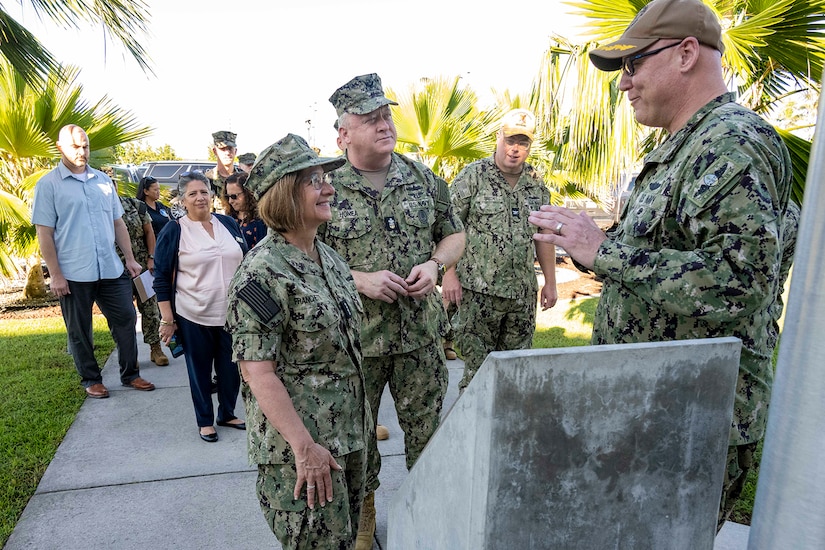Chief of Naval Operations Adm. Lisa Franchetti yesterday said she credits both a recent transformation in the Navy’s surface warfare training regimen and the quality of logistics operations for the service’s ability to successfully counter recent attacks by Iranian-backed Houthi terrorists in the Red Sea.
Navy assets have been operating in the Red Sea since December as part of Operation Prosperity Guardian, a U.S.-led, multinational coalition established to counter attacks by Houthi terrorists on merchant and naval vessels.
“[Operation Prosperity Guardian] is a great coalition of nations that are really standing up for the rules-based international order as we work to preserve the free flow of commerce through the Red Sea, through the Bab el-Mandeb [Strait], and on into the Gulf of Aden,” Franchetti said.
During a discussion on the overall state of the Navy with Defense One, the digital media platform in Washington, Franchetti was asked about what lessons the Navy has learned in the months since it first began participating in the coalition.
The first lesson, Franchetti said, relates to a transformation in surface warfare training that began roughly nine years ago. At that time, the Navy brought in highly trained instructors to teach members of the surface warfare community how to bring a tactical edge to the field.
“And now you see nine years later, … we’ve set up reach-back to our warfighting centers to be able to really understand what’s going on in the operating environment, to be able to adjust tactics, techniques [and] procedures,” said Franchetti, who lauded the quality of Navy training across all surface-ship platforms and the entire joint force.
“I think the investments that we made are really paying off,” she said, “[including] those great lessons that we’re learning about how to innovate while we’re out there in the same battle space.”
Franchetti also highlighted how the evolving quality of the logistics operations being conducted during Operation Prosperity Guardian is contributing to the Navy’s overall operational readiness.
“We had to bring some of our ships out of the Red Sea, originally, to be able to do some of the [logistical] things they needed to do,” explained Franchetti. “But now we’ve been able to work with allies and partners to be able to do that right on station and really keep everybody in the fight.”
Franchetti pointed out that the Navy is successfully conducting multiple logistics operations on a daily basis in regions beyond the Red Sea.
“I’m really proud of how our forces are set up across all of our different regions to be able to respond and to be able to pull together to provide the resources we need to keep our operations going,” she said. “I think it’s a real testament to the work that’s been done in the past to enable us to do this work now and into the future.”
Houthi militants have attacked or threatened Navy and commercial vessels more than 100 times since late November of last year, according to U.S. Central Command. In response to these attacks, U.S. and coalition forces have conducted 50 self-defense strikes as of March 25.
Beyond current and future naval operations, Franchetti, who was promoted to chief of naval operations last November, also discussed unmanned vehicles, shipbuilding, retention and quality of life.
“I could not be more proud of our Navy team or more focused on building the Navy that our nation needs to do all the missions that [Americans] count on us to do every single day,” said Franchetti.
“And I’m really looking forward to working … with all of our stakeholders to be able to do that over the next four years that I’m here as CNO.”









